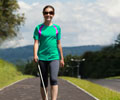An international team of researchers has found that people fluent in sign language may simultaneously keep words and signs in their minds as they read.

The slightly better reaction time and improved accuracy rate indicates that the readers are able to juggle both English and sign language at the same time.
"If a sign language user is a bilingual juggler they might not respond to the connections between the signs and words in a conscious way. But we can design experiments to measure the unconscious response," said Kroll.
"The study shows that sign language users are similar to other bilinguals,' she said.
"This reflects previous research on bilinguals that shows both languages are active even when they're reading or speaking one language," she added.
The researchers tested 19 deaf adults who were fluent in American Sign Language (ASL) as they decided whether pairs of English words were related or unrelated in meaning.
Advertisement
Of the related pairs, such as bird-duck, 14 also had similar signs while 16 of the unrelated word pairs had similar signs.
Advertisement
The researchers added a number of randomly assigned word pairs to complete the test.
When the participants encountered word pairs and signs that were related, the reaction time was significantly faster and more accurate than the reaction of a control group made up of 15 bilingual speakers who spoke English as a second language.
When the word pairs were matched with unrelated signs, the participants' reaction time was slower and less accurate.
The findings have been published in a recent issue of Cognition.
Source-ANI












